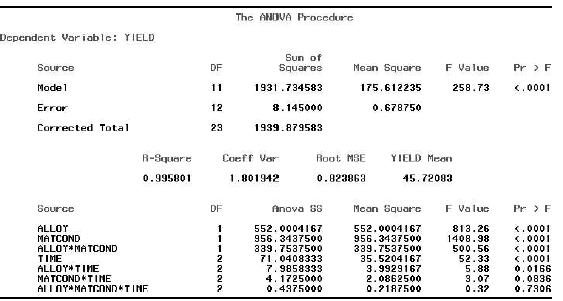In increasingly severe oil well environments, oil producers are interested in high-strength nickel alloys that are corrosion-resistant.
Question:
In increasingly severe oil well environments, oil producers are interested in high-strength nickel alloys that are corrosion-resistant. Since nickel alloys are especially susceptible to hydrogen embrittlement, an experiment was conducted to compare the yield strengths of nickel alloy tensile specimens cathodically charged in a 4% sulfuric acid solution saturated with carbon disulfide, a hydrogen recombination poison. Two alloys were combined: inconel alloy (75% nickel composition) and incoloy (30% nickel composition). The alloys were tested under two material conditions (cold-rolled and cold-drawn), each at three different charging times (0, 25, and 50 days). Thus, 2 × 2 × 3 a factorial experiment was conducted, with alloy type at two levels, material condition at two levels, and charging time at three levels. Two hydrogen-charged tensile specimens were prepared for each of the 2 × 2 × 3 = 12 actor–level combinations. Their yield strengths (kilograms per square inch) are recorded in the table.


a. The SAS analysis of variance printout for the data is shown above. Is there evidence of any interactions among the three factors? Test using α = .05.
b. Now examine the F tests shown on the printout for the individual interactions. Which, if any, of the interactions are statistically significant at the .05 level of significance?
Step by Step Answer:

Statistics For Engineering And The Sciences
ISBN: 9781498728850
6th Edition
Authors: William M. Mendenhall, Terry L. Sincich





